Synopsis: Inset doors offer a clean look for furniture or cabinets. Stefan Straka explains that when you mount a cabinet door with butt hinges, there are two tools that are key: a set of digital calipers and a track saw.
Are you in the process of building furniture or cabinets and aiming for a clean and refined look? Look no further than inset doors with traditionally mortised butt hinges. However, fitting these doors perfectly can be quite daunting. The challenge lies in the fact that inset doors are boxed in on all sides, making even the slightest differences in reveals easily noticeable. But don't worry, in this article, we will guide you through a foolproof method that streamlines the door-fitting process and ensures consistent reveals for a polished finish.
Dial in your shims and mortises
When it comes to cabinets with solid-wood door frames and traditional butt hinges, a 1/8-inch reveal on all sides of the door is ideal. This size gap allows for seasonal wood movement and potential binding, while still accommodating most drawer slides. To set the reveal, you will need a set of four shims that are just slightly thinner than your desired gap, and two shims that are exactly 1/8 inch thick for checking reveals later. These shims can be finely tuned using a table saw or drum sander. It's crucial to ensure a perfect gap on the hinge side of the door by dialing in the depth on your hinge-mortising jig before you begin.
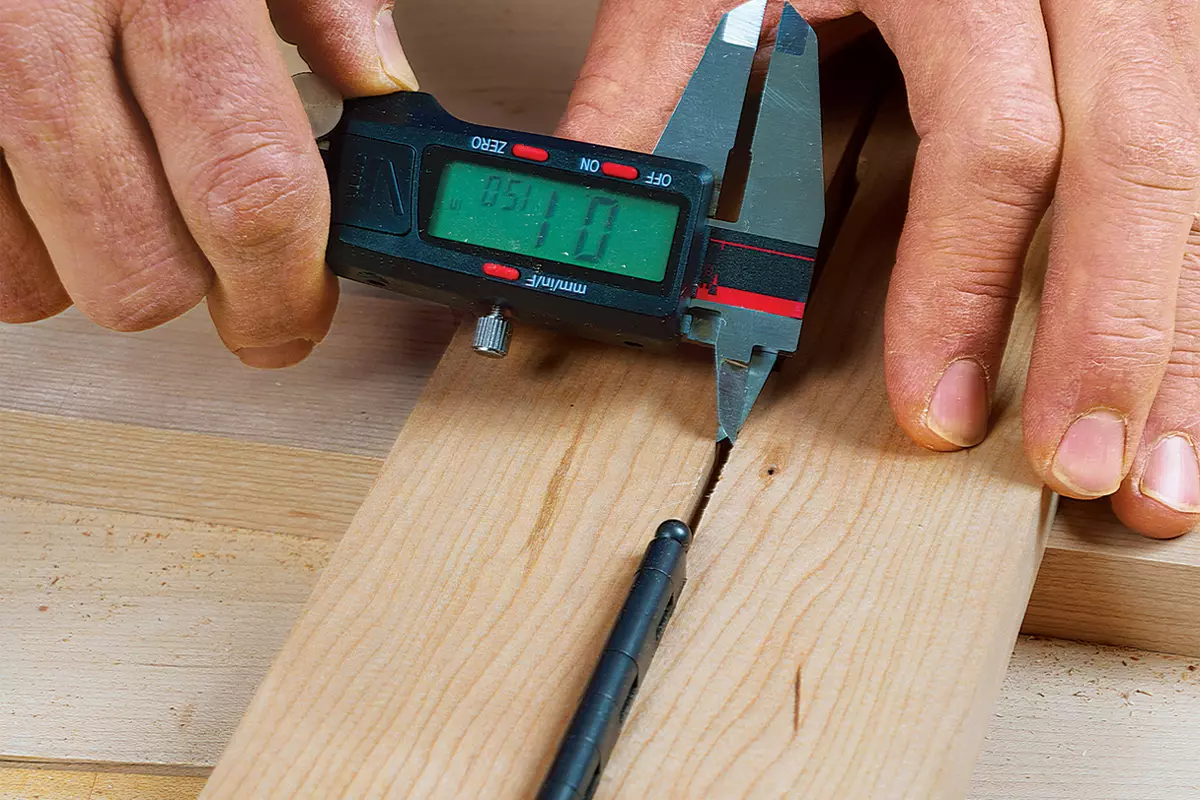 Photo: Asa Christiana
Photo: Asa Christiana
Rip your shims. Make thin rips on the table saw until you get a strip equal in thickness to your desired door reveals, in this case, just under 1/8 inch. The gaps will end up very close to 1/8 inch after you sand the edges of the door.
 Photo: Asa Christiana
Photo: Asa Christiana
Dial in your hinge-mortising jig. Mortise two test pieces, equal in size to a door stile and a face-frame stile, to test the mortise depth and ensure a precise gap on the hinge side of the door.
Trim the top to fit the bottom
To begin, the doors should be able to slide into their openings, but just barely. If you notice that the doors or face frames are slightly out of square at this point, leaving a tapered gap in one or two spots, rest assured that the 1/8-inch reveals will erase those. The purpose of the first cut along the top edge is to set the gap at the bottom edge, which won’t be trimmed at all. Later, the top edge will be trimmed again to achieve the perfect reveal.
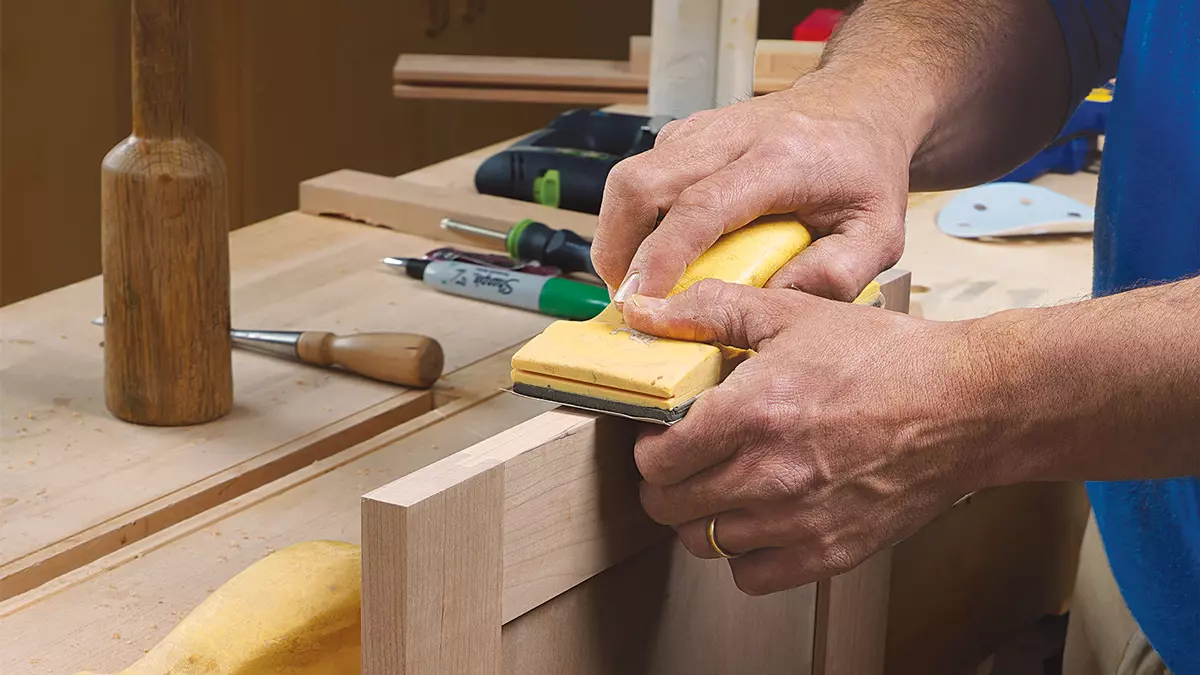 Photo: Asa Christiana
Photo: Asa Christiana
Sand the bottom. This is the last time you’ll want to remove any material from the bottom edge, so sand it through all but your final grit now.
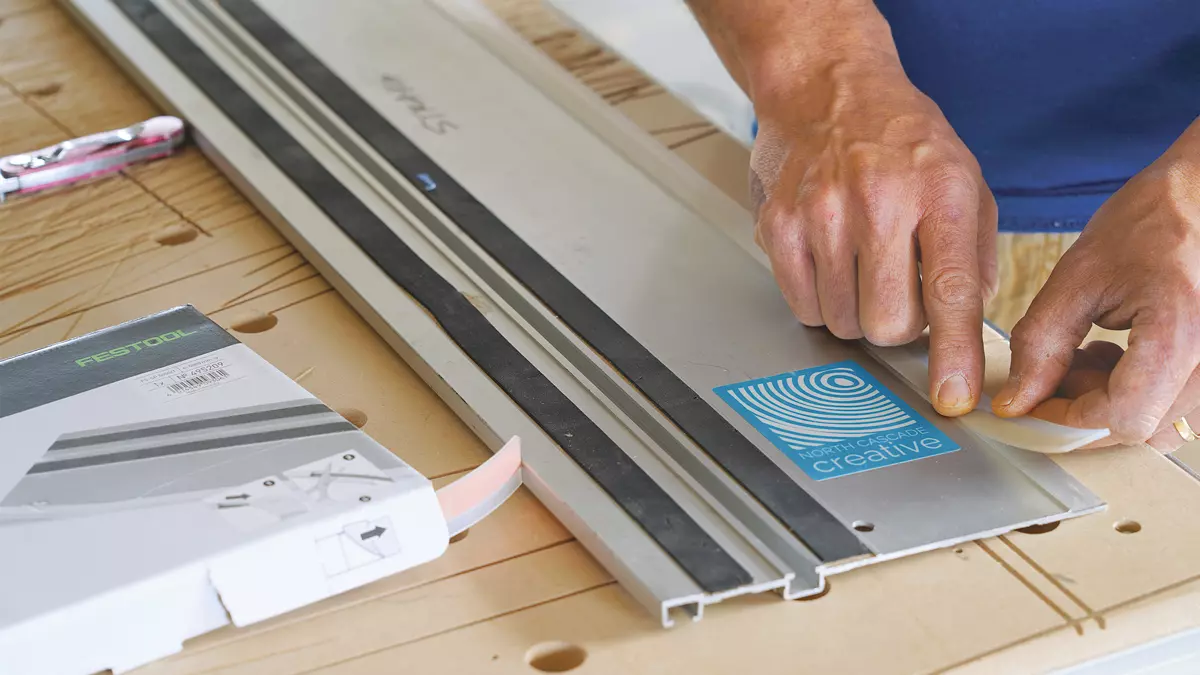 Photo: Asa Christiana
Photo: Asa Christiana
Mark the top edge. Set the shims at the bottom of the face-frame opening and place the door against them, with its top edge resting against the top of the face frame. Mark the top of the door where it hits the frame, and transfer those pencil marks onto the face of the door for trimming.
 Photo: Asa Christiana
Photo: Asa Christiana
Tune up your track saw. Stick a new splinter guard on the edge of a track saw, and trim it with a fresh blade. This ensures accurate setup and clean saw cuts.
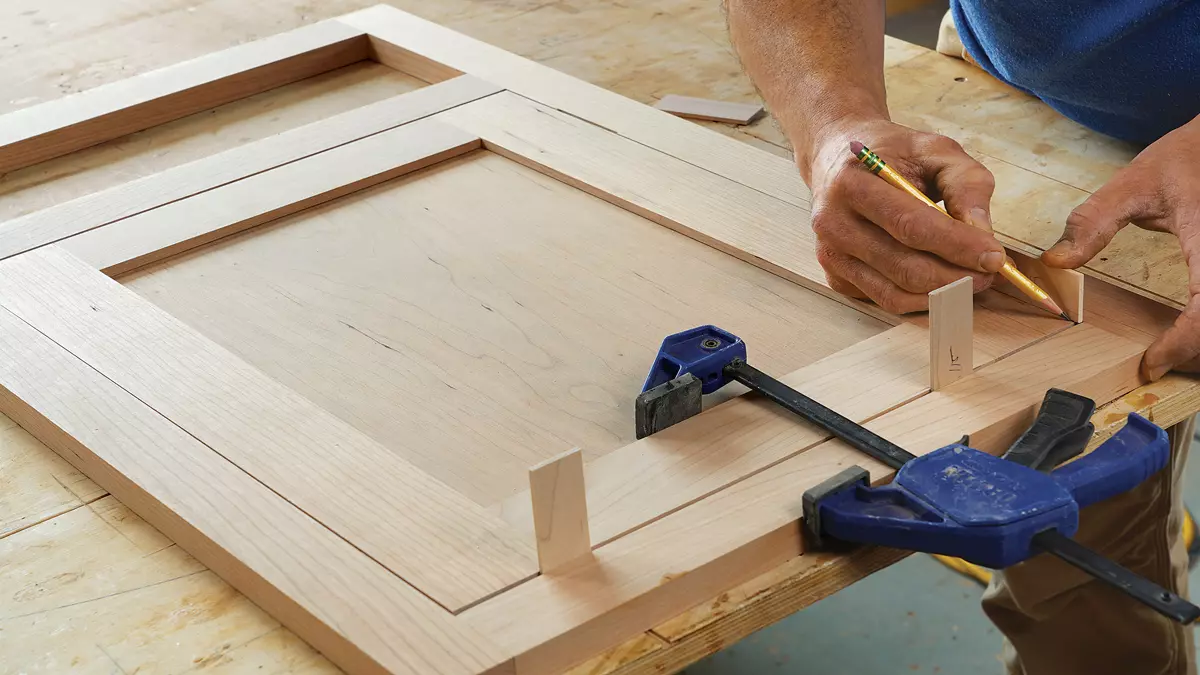 Photo: Asa Christiana
Photo: Asa Christiana
Make a smooth trim cut. Set up the track saw to remove just the pencil marks. Use scrap boards, placed at the front and back edge, to keep the track level and prevent blowout. Cut all the way across in a single, steady push before retracting the saw for best results.
Hinge side comes next
After each edge is trimmed, place the door back in the opening against one pair of shims to align it for marking the next edge, which is done using the other pair of identical shims. If the door doesn't fit, you might need to trim some material off one side to correct any squareness errors.
 Photo: Asa Christiana
Photo: Asa Christiana
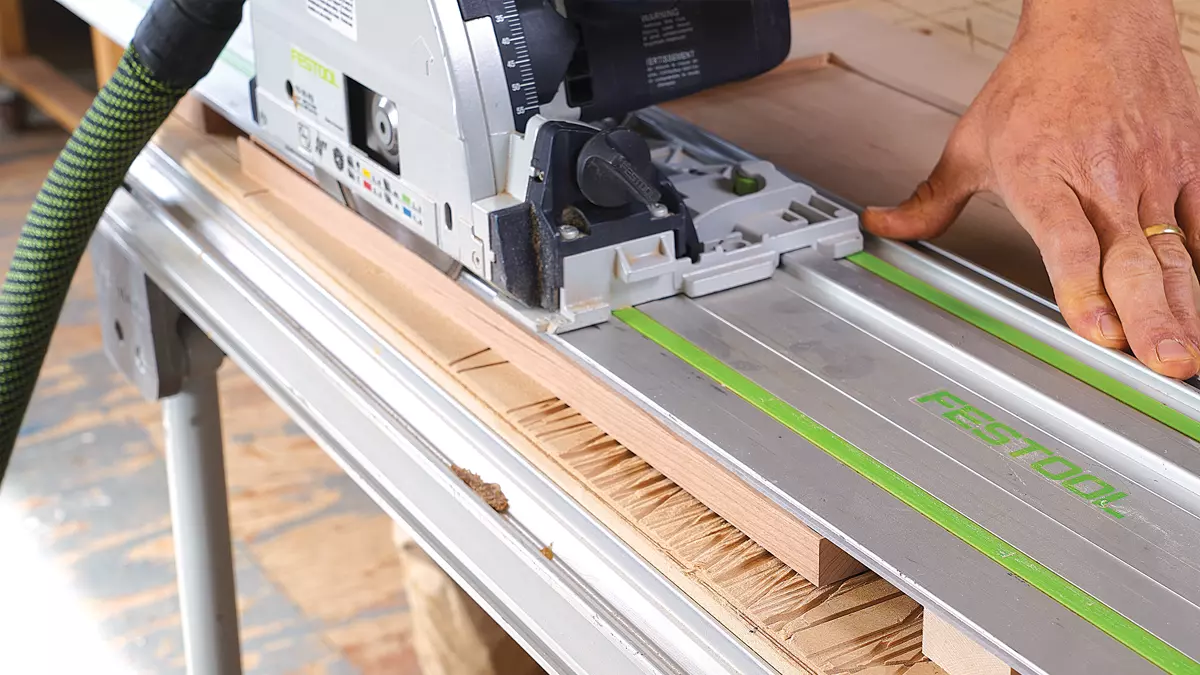 Photo: Asa Christiana
Photo: Asa Christiana
Mark the hinge side. With the door in the opening pressed firmly against the bottom shims and lightly against the strike side, place some shim stock against the hinge edge of the face frame and mark the hinge side. Align the shim visually with the edge of the face frame and mark the door along the opposite side of the shim. Mark the top and bottom of the hinge edge with a sharp pencil line.
 Photo: Asa Christiana
Photo: Asa Christiana
Trim the hinge edge of the door. This cut is in line with the grain, allowing you to push the extra support boards further away to keep the track even more level. Try to split the lines with the splinter guard to avoid removing too much material.
Time to mortise the door
For mortised butt hinges, the next step is transferring the hinge locations from the face frame to the door and routing the hinge mortises. Ensure that you have not adjusted your router since you mortised the face frame. If you have, it's worth taking the time to create a perfect hinge-side gap through another test mortise.
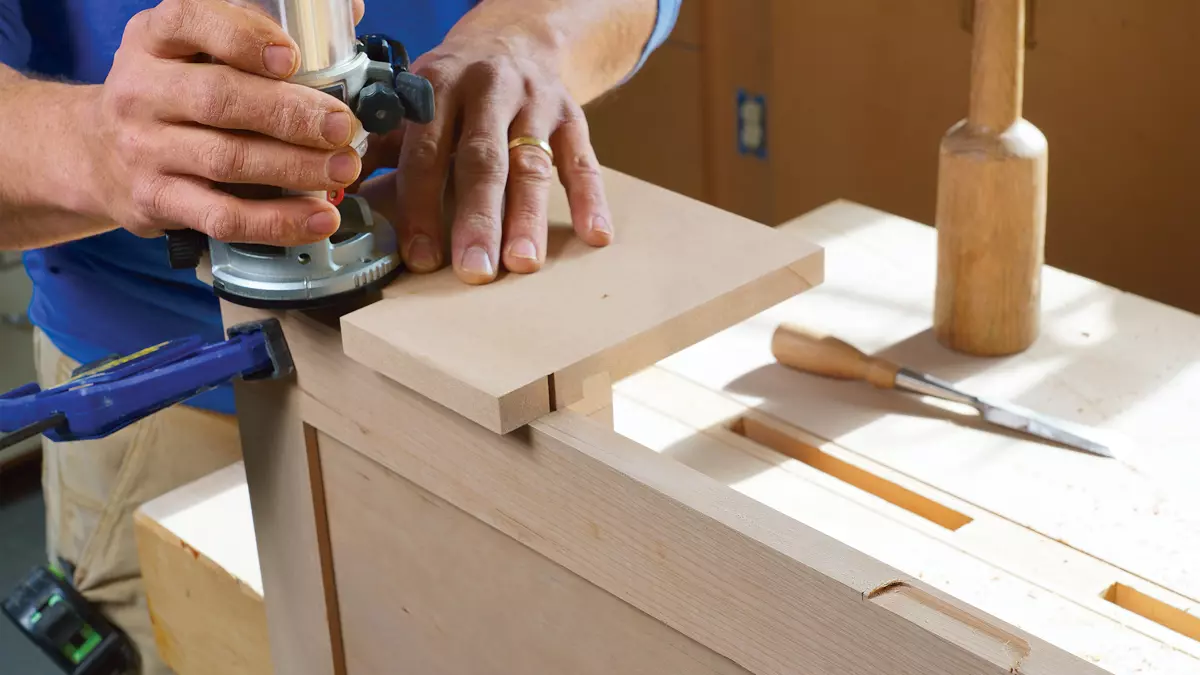 Photo: Asa Christiana
Photo: Asa Christiana
Mark the hinge locations. Lightly sand the hinge side to remove saw marks. Then, place the door back in the opening against the bottom shims and slide it against the hinge side. Using a sharp knife, transfer the mortise locations from the face frame to the door.
 Photo: Asa Christiana
Photo: Asa Christiana
Rout the door mortises. To accurately locate your router jig on the knife lines, run a sharp pencil down each one to make them stand out.
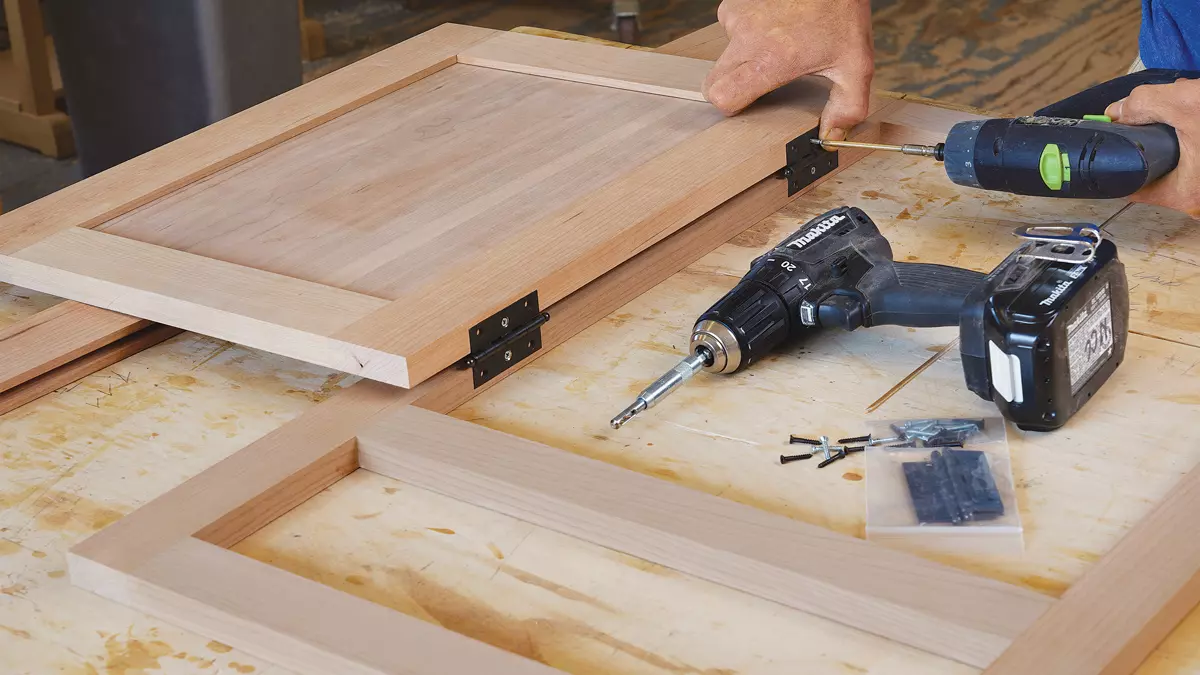 Photo: Asa Christiana
Photo: Asa Christiana
Square the mortises. After routing, take a few moments to square the corners with a chisel.
 Photo: Asa Christiana
Photo: Asa Christiana
Test-fit the hinges. Set each side of each hinge into its mortise, drill a single pilot hole for the center screw using a self-centering bit, and then temporarily attach the hinges with only the center screws. Use the lowest torque setting on your driver to prevent stripping the screwheads or pilot holes.
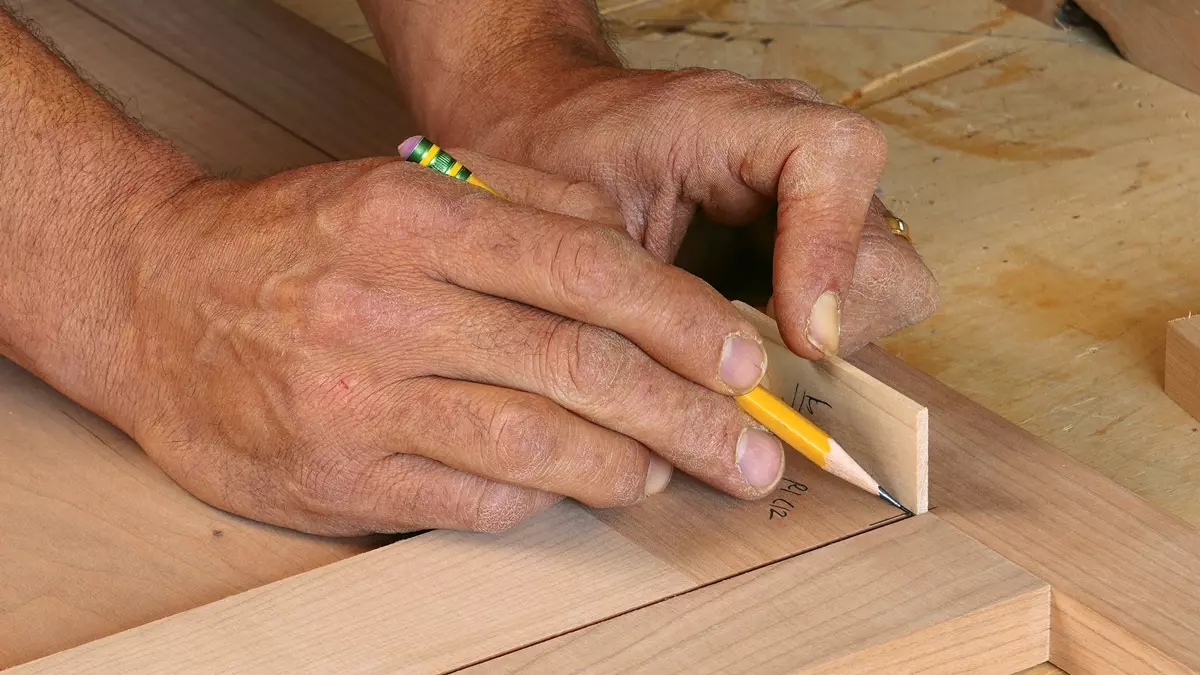 Photo: Asa Christiana
Photo: Asa Christiana
Check the gap. Use a set of shims milled to the full 1/8-inch thickness to inspect the hung door for even reveals on the hinge side and bottom edge. Misalignment along these edges indicates a problem with your router-jig setup. If the mortises are too shallow, re-route them. If they are too deep, use brass shim stock to shim out the hinge leaves as needed.
One step for the final edges
For individual doors, you can simply mark the strike side of the door and top edges at the same time to complete the process.
 Photo: Asa Christiana
Photo: Asa Christiana
Mark the top side and strike side. Use the same shim-marking technique, ensuring that the outside of the shim aligns with the inside of the face frame.
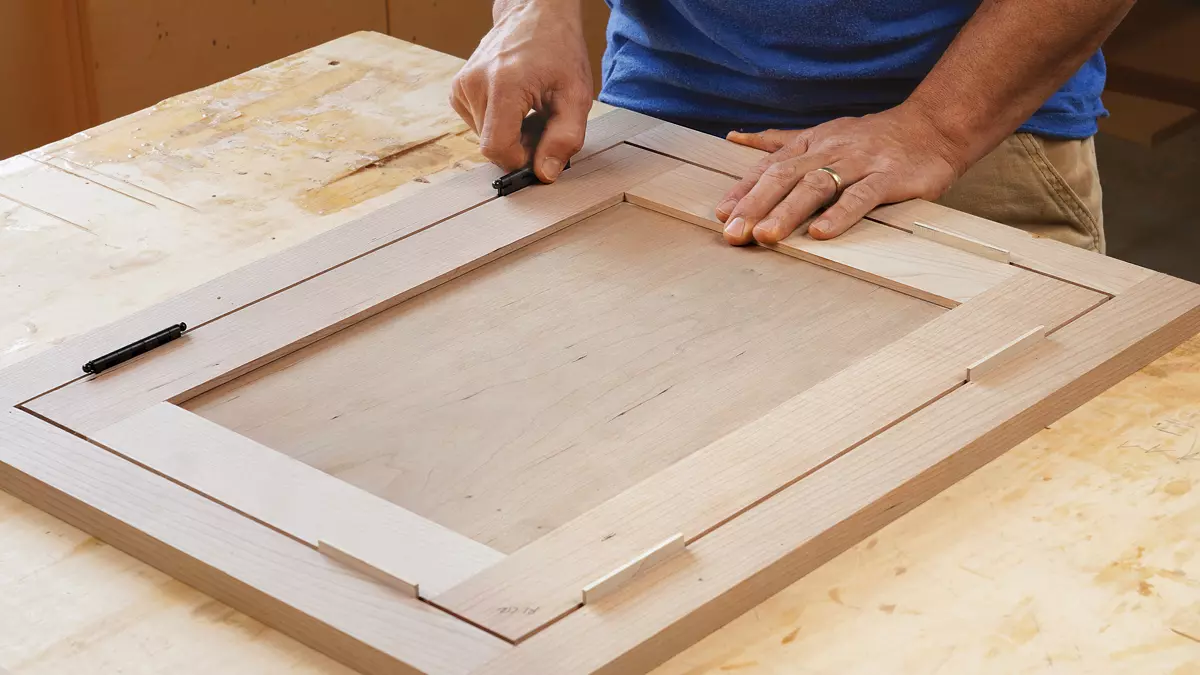 Photo: Asa Christiana
Photo: Asa Christiana
Final cuts. Set up your last two cuts just like before, with the edge of the track splitting the lines, and scrap boards arranged to keep the track level and prevent blowout.
 Photo: Asa Christiana
Photo: Asa Christiana
One last check. Use the hinges and 1/8-inch shims to check the reveals. If necessary, you can remove another sliver of material. Finally, sand the last two edges to create the full 1/8-inch reveal.
Process for paired doors
For paired doors, a small adjustment is needed in the above progression. By working all the way around one door with the usual process, you may end up removing the bulk of the strike-side material from just one door, leaving little material to trim from the adjacent one. This can result in different widths for the strike-side stiles, which can be noticeable by the naked eye. To address this, mark the center of the face-frame opening (top and bottom) and take both doors simultaneously through the hinge-mounting step. Then, trim off just enough from each door to allow them to close perfectly. Additionally, to create a perfect gap between the strike-side stiles, center the marking shim on the face frame center line and mark both doors simultaneously, top, and bottom.
Stefan Straka, the owner of North Cascade Creative, a professional cabinet and furniture shop in Bellingham, Wash., has shared his expertise in achieving foolproof inset cabinet doors. The photos accompanying this article were taken by Asa Christiana.
Photo: Asa Christiana
From Fine Homebuilding #304
To read the entire article, please click the View PDF button below.
RELATED LINKS









